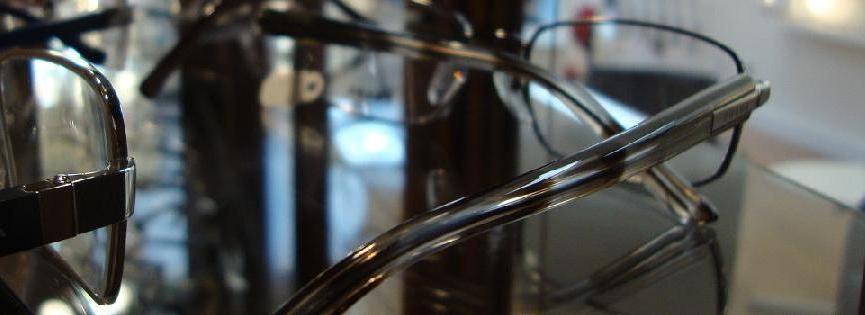Eye Exam
Comprehensive Eye Examination:
At Orange optometry, our Eye Examination includes the following steps:
- Creating / Updating patient file
- Pre-testing
- Visual acuities
- Assessment of binocular coordination
- Determination of your refraction
- Assessment of eye health
CREATING AND OR UPDATING YOUR FILE
We collect and save your information in order to be able to serve you during your visit and your future visits. Our system is digital and paperless. Using the computer, we can access your file faster and easier. We also use the computer to compile practice management data so we can become more efficient at providing services that you want.
PRE-TESTING
We will guide you through our preliminary tests. Your present glasses will be analyzed, so we know what you are used to wearing. We will use an Autorefractor to measure the curvature of your cornea and to receive an estimate of your prescription. We will use a Non-Contact Tonometer (NCT) to measure the pressures in your eyes. This is one of the tests that are necessary to examine for glaucoma.
VISUAL ACUITIES
This is a measure of how well you can see. Visual Acuity (VA) is dependent on the sharpness of the retinal focus within the eye and the sensitivity of the interpretative faculty of the brain. Visual Acuity of 20/20 is considered nominal performance for distance vision and 20/200 to be legally blind. A visual acuity of 20/20 is frequently described as meaning that a person can see detail from 20 feet (6.1 m) away the same as a person with normal eyesight would see from 20 feet. If a person has a visual acuity of 20/40, he is said to see detail from 20 feet away the same as a person with normal eyesight would see it from 40 feet away.
BINOCULAR COORDINATION
This is a measure of how well the two eyes work together. This can be especially important in the examination of young children who are just starting school. It is important for children to have a complete eye exam by 6 months, at 3 years and definitely by age 5 before school starts and annually thereafter. There are some conditions you MUST catch before 6-7 years of age, like lazy eye, otherwise it will be very difficult to treat it. We can measure depth perception, tracking, pursuits, saccades, focusing ability, etc.
REFRACTION
Refraction determines the required prescription for your eye glasses. We use the results from the preliminary testing as a starting point, and refine this to an accurate measurement. There are essentially four types of refractive states of the eye: MYOPIA (NEARSIGHTEDNESS), HYPEROPIA (FARSIGHTEDNESS), ASTIGMATISM, and PRESBYOPIA.
EYE HEALTH
This is one of the most important parts of the full eye exam. Inside the eye is the only spot you can actually see your blood vessels and circulation in the body. This is why the family physician looks into the eyes at your routine physicals. Some conditions such as diabetes, high blood pressure, hardening of the arteries, glaucoma, and high cholesterol can SHOW UP FIRST in the eyes. This is why people should have a full eye exam every year. In our practice, we do dilated fundus exams on all first time patients over 18 years old, and on a regular basis thereafter. In certain cases, we will also do a computerized test of your peripheral vision (automated perimetry).
If you need dilation, the Doctor will give you eye drops that will enlarge your pupils. This will make it possible to examine the peripheral retina. Because of drops, you will see a little blurry and you will be more light sensitive for between two to six hours. You might not feel comfortable driving after dilation and therefore we would recommend you to come with someone who can drive you back. Also we recommend bringing your sunglasses.
Contact Lens Examination:
For contact lens wearers we recommend having a contact lens examination at least once a year. A contact lens examination will assess the fitting of the contact lenses and will give you your required contact lens prescription. The doctor will look at the fitting of the contact lenses and prescribes the best available contact lenses for your eyes. During this examination the optometrist will assess your tear film, eyelids, cornea and conjunctiva. This will give a good indication whether wearing contact lenses is an option for you. If the answer is positive than the required prescription and curvature of the contact lens will be measured. And last but not least the optometrist will advise you on different materials, wearing schedules and how to optimally take care of them. Proper hygiene and treatment of your contact lenses will help prevent possible future problems and is very important in maintaining healthy eyes. Ask us about different cleaning solutions because you may use a very high oxygen permeable contact lens, but when the cleaning solution doesn't combine well with the material, your contact lens may not be clean, which will decrease oxygen permeability.
A contact lens examination can be combined with your regular eye exam.
Information about BC Medical Service Plan:
In British Columbia, routine eye examination are partially covered by MSP for children under 19 years and for seniors 65 years and above. For individuals between 19 and 64 the general eye exams are not covered by MSP. But, medically required eye exams continue to be a benefit for all ages. Therefore we ask all our patients to bring their valid BC Care Card with them when visiting our clinic for the first time.














